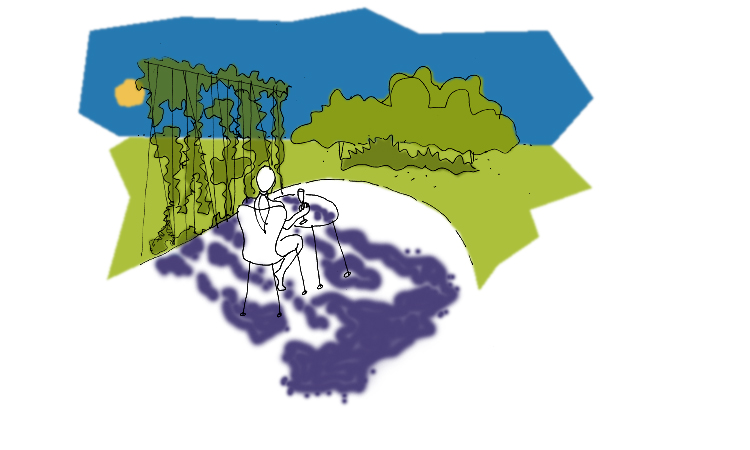Plan now to beat the heat next summer.
If this summer has left you more hot and bothered than hot and happenin’, then don’t despair.
As the season officially draws to a close it’s a good time to make some observations so you can plan ahead and be prepared for next summer.
While the sun is still high and the days are long, take a good look around the garden and bear in mind the following three questions:
Question 1: what time of day do you plan to use the garden space in question?
Seems obvious huh – the day time. But you mightn’t actually need shade throughout the whole garden from sunup to sundown.
If you’re an early riser who enjoys having your first cuppa and breakfast out in the garden, then it might be most important for you that there is shade then.
If you have young kids at home you’ll also be an early riser (!), but it might be more important that you have some consistent shade throughout the day. That way there’s always somewhere sheltered available for running around, playing with the hose and splashing paint about.
Maybe you have dogs, and you’re out at work all day. It’s also important that they have access to somewhere shady through the hottest part of the day and year.
But if you dream of having sunset drinks without burning out your retinas, then some late afternoon shade might be what is required.
Anyone for Pimms?
Question 2: what type of shade do you want?
Again, this might seem obvious, but there are many different types of shade.
Think of the huge fig trees you see around Brisbane. They create a pool of shade that is deep, dark and noticeably cooler (left below).
Other tree species have a more open canopy and form, and consequently they cast a shadow that is lighter and more fragmented (right below).
Deciduous trees, of course, seasonally change the amount and type of shadow they create. They can be a good choice if you're after summer shade and winter sunlight.
Remember that shadows also change with the seasons. In summer, the sun is higher overhead, so shadows are smaller and closer to the object casting the shadow (left below). In winter the sun is lower in the sky, resulting in shadows that stretch out a long way away from the source (right below). Your neighbour’s palm shadows for example, are close to the trunk in summer, but could be falling over your garden in winter.
Try and think about what type of shadow you’re after, and then consider the ways that could be achieved.
Question 3: how patient are you?
This might seem like a personal question, but it pays to be honest with yourself in order to get a result that fits. The two ways we can create garden shade are through live elements – trees, shrubs, climbers trained over arbors and trellises; and built elements – rooves, shelters, screens and the like.
Unless you can afford to import a mature tree, all plant material will require time to establish in your garden and grow. This is true even if you select the right species for your area and provide optimum growing conditions.
Until the plantings are doing their job, you might have to rely on some temporary shade solutions – maybe some cool umbrellas.
If the thought of waiting 5, 10, or even more years until the vines clamber over the pergola or the tree reaches full height fills you with anxiety, you might need to consider a built solution.
As well as the benefit of shade without the wait, this allows you to complement the architectural detailing of your house. You have to consider all the seasons carefully though, as there aren’t too many deciduous rooves around if you also need winter sun. And of course, structures require maintenance, just like the rest of your house and garden.
Often, a combination of built and growing shade solutions can be tailored to meet your exact conditions and requirements.
Pergola structure with newly planted climbers (left), temporary shading (centre) and fully grown (right).
Now it’s over to you.
Did this help you consider some of your garden shade options differently? Feel free to confess if you suspect you’re an ‘instant shade’ person or not, and how you might plan your attack in response.
If you think someone else might benefit from this article, please share it with them. If you liked it, then hit us with a big heart below.
Thanks for reading, and see you soon for more garden, landscape and design stories.

















